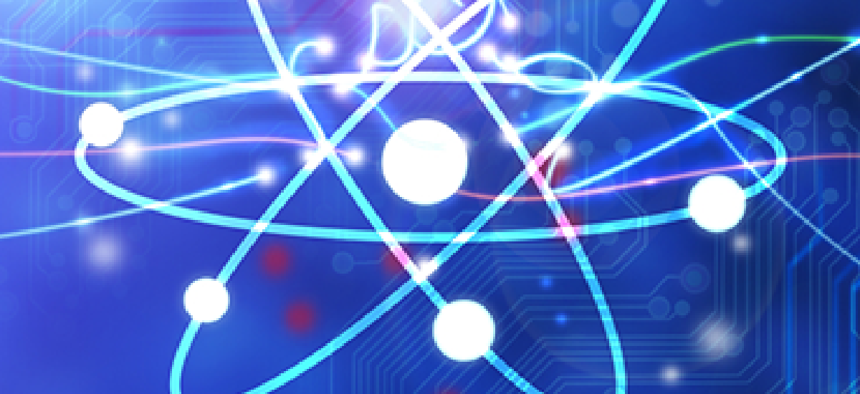NASA's quantum lab could be giant leap for computing

Quantum computing could help with challenges such as optimizing air traffic control or recognizing subtle patterns in data.

Research at NASA's Quantum Artificial Intelligence Laboratory – home to one of the few quantum computers in the world -- could help unlock the potential of quantum approaches to optimizing air traffic control, robotics, pattern recognition, and mission planning and scheduling.
The machine that has the interest of NASA and partners Google and the Universities Space Research Association (USRA) is the D-Wave 2, a 512-qubit quantum computer built by D-Wave Systems at NASA's Ames Research Center.
In traditional computing, data is encoded in the binary bit – either as a 1 or a 0 – but a quantum computer's use of quantum mechanical phenomena allows a quantum bit, or "qubit," to represent a one, zero or both values simultaneously. There is no classical computing approach equivalent to the way the qubit allows information to be processed, so advanced quantum computers may one day quickly solve problems that would take even today's fastest supercomputers millennia to decode.
NASA will focus first on getting acclimated to the quantum computer, developing artificial intelligence and quantum-classical hybrid algorithms, quantum computer acceptance tests and problem decomposition and hardware embedding techniques.
"The quantum computer isn't designed to be a replacement for traditional computers and supercomputers. It's designed to be used in conjunction with them," said Vern Bronwell, CEO of D-Wave Systems. The company sold its first D-Wave system to Lockheed Martin in 2011, garnering significant attention -- and some criticism from skeptics, who questioned whether D-Wave's quantum claims were for real.
In many ways, the NASA-Google-USRA partnership over D-Wave 2 serves notice to the scientific community that it is legitimate.
One of NASA's initial applications with the quantum computer is exploring new computational techniques in the search for other Earth-like planets outside the solar system. NASA's now-inoperable Kepler telescope, for example, produced a slew of transit data that traditional computers try to make sense of with the use of heuristic algorithms that find approximate solutions when classic methods can't find exact solutions.
NASA said this computational limitation implies that some planets – smaller ones that are close to Earth's size – go undiscovered, but suggests quantum approaches could find planets that were otherwise undetectable.
Bronwell said NASA scientists have already found planets by running some data from Kepler in the quantum computer. They were not new planets, he said, but the find "verified the machine works."
Interest in quantum computing is likely to increase in the scientific community as advancements are made with D-Wave 2, but the intelligence and defense communities have also taken note of supercomputing alternatives.
The intelligence community's research arm, the Office of Intelligence Advanced Research Projects Activity, recently developed a program that aims to create superconducting supercomputers that use less energy and are far faster than today's supercomputers.
Perhaps not coincidentally, D-Wave 2's Vesuvius processor operates at 20 millikelvin, or just above absolute zero.
NEXT STORY: 90% of Wikipedia's Editors Are Male






